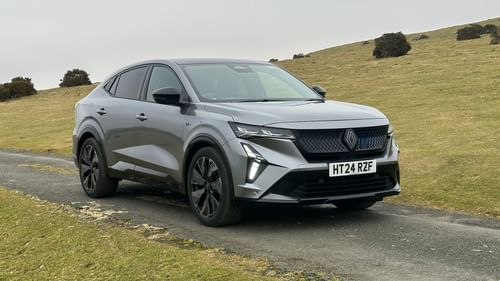Whatever happened to the Renault 25?

The Renault 25 deserves more respect. Have people forgotten just what a formidable car it was or that the team responsible for the design reads like a veritable who's who of the car design world? Or the gloriously sumptuous Baccara and Limousine versions of the Renault 25?
When I was growing up there seemed to be an awful lot of Renault 25s on the road. But by the time I was learning to drive most seemed to be either cosmetically challenged, suffering from rear suspension collapse or billowing out plumes of blue smoke. Sometimes it was a combination of all three - a rare treat for anyone lucky enough to be following one through town.
Today, according to HowManyLeft? there are 302 Renault 25s left on the road with a further 273 listed as SORN, so the 25 is hardly on the critical list - yet. But when you consider the fact that as recently as 1994 there were 46,000 on the road, you realise the executive Renault's fall from grace has been rather dramatic. Time to start a campaign to the save the Renault 25 then?
Opron and Gandini

Why should we care? It's just another Renault from the 1980s that by now will undoubtedly need more love and money than is probably sensible. But then it's not just another Renault. Consider the facts.
None other than Robert Opron, he of Citroën SM, Citroën CX, Citroën GS, Alpine A310 and Renault Fuego fame, was involved with the design of the car. The 'bubble'-like rear window is pure Opron, designed to give the 25 a saloon-like appearance – critically important for executive car buyers outside of France. The feature was also used to good effect on the Fuego, albeit for different reasons.
Then there's the interior – penned by none other than Marcello Gandini. Being sat in a cabin designed by the chap responsible for the Countach, Stratos and Miura – to name but three beautiful cars – is quite something. Even now the Renault 25 interior looks plush and inviting - especially on the top-spec models. Just the thing for a long and wafting drive through France.

The Renault 25 was announced in 1983, but the replacement for the ageing Renault 30 wouldn't be seen until 1984. In just about every single area the 25 was a better car than the 30. Heck, Renault was even using the ‘Renault Build A Better Car’ strapline throughout their ad campaigns at the time. The fact was, the 25 was more efficient, larger, smoother and better equipped than the car it replaced.
Yes, sir
Naturally the Renault 25 interests PetrolBlog most when it's in its most lavish form. The mere mention of the Baccara will result in some people shivering with excitement. And we're not talking about the 1970s Spanish disco duo who could most certainly boogie.
The Baccara was effectively a replacement for the slow-selling but no less appealing Renault 25 Limousine, both of which offered the French take on what a luxury car should feel like. The leather interior created a Parisian gentlemen's club ambience to the cabin, juxtaposed wonderfully by the array of electronic gadgets and gizmos. This was the period in which electronic dashboards, voice synthesisers and digital displays were avant-garde.
Regretfully there are seemingly no Baccara left on the roads of Britain, but the fact that nine are listed as SORN gives us hope. There's worse news for the Limousine with the manual version already spiralling into oblivion - the last example disappearing once and for all late last year.
Raise a glass
There are however two Limousine automatics wafting around the roads of Britain. PetrolBlog raises a glass of Kronenbourg to the individual who bravely soldiers on behind the wheel of his V6-powered long-wheelbase Renault 25, presumably doing his best impression of Francois Mitterand. We're hoping a pair of Tricolores are mounted on the edge of the bonnet.
In 1992 the Renault 25 was dropped to make way for Renault's new flagship, the Saffrane. With the exception of the 2.0-litre model, most engines had been V6s – perfectly suited to the 25's nature. In fact, PetrolBlog would very much like an early V6i please. Although sadly now few in number, the pre-facelift models are arguably the prettiest of the breed.

What's more, the launch flagship 2.7-litre V6i would offer the silkiest and creamiest driving experience. The top speed was 125mph and 62mph was reached in less than ten seconds. Not quick, but at least it gives you extra time to admire Gandini's brilliant but misunderstood interior.
We'll leave you in time honoured Whatever happened to? fashion with a look back at a classic television ad from the time. It's easy to forget that Renault had its own Gold Blend couple back in the 1980s - two successful and wealthy individuals seemingly at home in the luxury surroundings of the 25.
https://youtu.be/kzjaAper3ls
We watched as the man of the house started his own business before his wife secured a high-powered job of her own. Naturally a Renault 25 was part of the package. The ad campaign culminated with the couple - now revealed as Mr and Mrs Parker - going into business together, but not before we were 'teased' into thinking they were heading for an amicable but painful divorce.
The ad is notable for just how delightful the Renault 25 looks in the ad. Yes we'd prefer a facelift model, but just look at that interior. Oh and have we mentioned the yellow fog lights? Wonderful.





